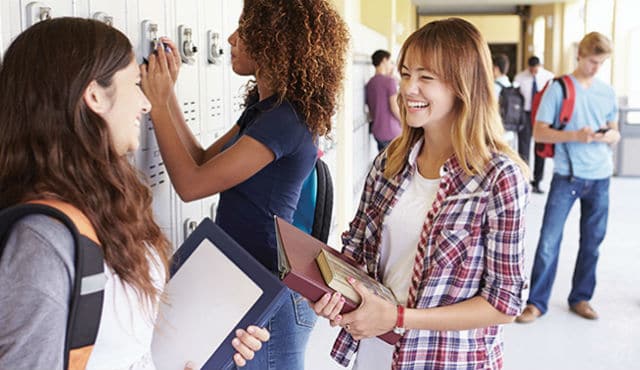Studying up on the safety of schools
Traditional video surveillance is an extremely useful investigative tool – after an incident has occurred. Unfortunately, by then, school property may have already been damaged, valuable supplies and equipment stolen, or a student or teacher victimised.
Today’s video technology – when integrated with video analytics, audio, and access control can better prepare schools to mitigate and even prevent security incidents from happening.
The latest Indicators of School Crime and Safety: 2016 report from the US Department of Education and the US Department of Justice, highlighted a dramatic reduction in current incidences of theft, victimisation, bullying, and fights in school from the late 90’s (when reporting first started). But can we identify the role that technology has played in this decline?
Smarter cameras
According to the report, the percentage of public schools that use security cameras has increased from 19% in 1999-2000 to 75% in 2013-2014. Even the visible presence of a camera can be a deterrent to undesirable behavior. But when combined with a motion detection, loitering or cross-line video analytics, it can also actively alert security officers to an unauthorised presence, such as students gathering in “off-limit” areas during breaks, unwanted visitors loitering around school entrances, and even intruders at night. Most schools have limited security resources, so cameras are used as a “force multiplier” to extend 24/7 security coverage over a wide area, sending alerts and live video footage to a central monitoring station or to a security officer’s smartphone for follow-up.
Controlling access
Keeping unwanted visitors out is one of the best ways to protect schools against serious threats. And the same report found that the percentage of public schools that reported controlling access to school buildings had increased from 75% in 1999-2000 to 93% in 2013-2014. Similarly, the number of students who reported locked entrance or exit doors during the day increased from 38% to 78% during the same period.
Network based access control solutions offer significant cost savings over traditional lock & keys by eliminating the need to re-key doors in the event of lost, stolen or misplaced keys. But access control technology can also be used to reduce theft, vandalism and accidents in key locations inside the school. In server and utility rooms where vital infrastructure is housed, in school laboratories containing expensive equipment and dangerous chemicals, in computer rooms, media centers, and even front offices or secure vestibules.
Access can be permission based, but it can also be scheduled – which is particularly useful for managing after school activities. For example, by granting scheduled access to coaches and teams who may be using the gymnasium in the evening, there is no need to search for an open door or custodian, and no need to compromise personal safety by keeping doors propped open for late arrivals.
IP-based network door controllers also integrate with video cameras which can be configured to trigger live or recorded images of all access attempts – both successful and, even more importantly, unsuccessful entry attempts.
Remote visitor screening
While keeping school entrance and exit doors locked during the day provides an extra layer of security, it also makes it challenging to efficiently manage visitors. The steady stream of parents picking up a sick child or meeting with a teacher, the food deliveries to prepare the day’s lunch, the guest speaker for today’s assembly, and a whole host of unscheduled – and possibly unwanted – visitors. And that’s just during school hours.
Network door stations installed at school entrances provide clear two-way audio communication and high resolution visual validation of school visitors no matter where school resources are located. A better – and safer – alternative to dispatching a staff member to physically open the door, school administrators can grant visitor access remotely from the front office or even from home via their smartphone.
Getting the message out
Although audio solutions are not directly referenced in the report, can be an effective complement to an integrated security solution. For example, if a camera detects an intruder on school grounds at night it can trigger a pre-recorded message or alert a remote security resource to issue a verbal warning, thus potentially deterring theft or vandalism. Network speakers also allow for school resources to broadcast important messages from anywhere via their smartphone – either broadly to the entire school, playground and parking lot, or to an individual classroom or zone.
Technology: one aspect of comprehensive school safety
There are, of course, many factors that contribute to a safer school environment. Educators, mental health professionals, law enforcement, parents and communities are all working proactively to develop a safe, inclusive environment, developing outreach programs and providing resources for troubled students. Although difficult to quantify its value, technology is an important dimension to comprehensive school safety – and the results are positive.
Story credit: Axis Communications
Source: https://www.axis.com/blog/secure-insights/school-safety/
This article was originally published by Axis Communications, Principal Exhibition and Registration Sponsor for the Security Exhibition & Conference.
You may also like
-
Stay up to date with the latest news and Security updates.
- Subscribe

